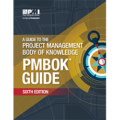
Many documents are created in the profession of project management. Some of these are critical to the successful completion of the project, and others are merely intended for organizing the work flow. But the Project Management Body of Knowledge (PMBOK) outlines many documents that have an integral place within the structure of project management, and the following list is taken from the PMBOK.
The list is organized by knowledge area.
Project Integration Management
- Project Charter (PMBOK 4.1.3.1). This document initiates the project and authorizes the project manager. It documents the business need for the project as well as assumptions and constraints the project must live under. It generally includes high level scope and quality information. It is issued by the project sponsor and represents the organizational authorization for the project.
- Project Management Plan (PMBOK 4.2.3.1). This is the project managers road map and guiding document. It is probably the single most important document for the project manager. It outlines how the project will be managed, and includes the project schedule, budget, quality standards, project team requirements, project control, and anything else that is necessary to communicate how the project will be managed. It should be approved by the project sponsor and changes made according to the official change control procedures specified within.
- Change Requests (PMBOK 4.3.3.3). When a stakeholder wishes that the project manager make changes to the project, a change request form is filled out and filed within the project management plan.
- Work Performance Reports (PMBOK 4.4.3.2). In order to communicate the project performance to the relevant stakeholders, the project manager or their delegate produces regular performance reports. These include earned value reports, memos, justifications, recommendations and the like.
- Change Log (PMBOK 4.5.3.2). The project management plan contains a record of all changes made, to ensure that the project is tracked and lessons learned are gleaned from the changes.
Project Scope Management
- Scope Management Plan (PMBOK 5.1.3.1). A component of the project management plan, this document outlines how the project scope will be managed, how scope changes will be addressed, and how the project scope will be monitored and controlled to ensure scope changes do not happen unless they are required.
- Scope Statement (PMBOK 5.3.3.1). This is the official statement which outlines the scope of the project. It should outline the primary project deliverables as well as expressly include or exclude items that are not obvious to the scope.
- Work Breakdown Structure (PMBOK 5.4.3.1). The WBS is the breakdown of the project into components for the purpose of identifying the scope. The PMBOK’s Work Breakdown Structure and the Activity List (see below under Project Time Management) are separate items, but in practice they are often one and the same.
- Requirements Management Plan (PMBOK 5.1.3.2). This is generally a subset of the scope management plan which outlines the requirements of the product. It is important where there are many, complex project requirements, such as software development that contains many user interface design metrics, bug tracking and so forth.
- Requirements Traceability Matrix (PMBOK 5.2.3.2). This is the central part of the requirements management plan. It tracks each requirement to ensure all of the small details are addressed and the requirements are satisfied.
Project Time Management
- Schedule Management Plan (PMBOK 6.1.3.1). A component of the project management plan, this is the central planning document relating to project scheduling. It contains things like the scheduling methodology and tools as well as level of accuracy, units of measure, and organizational procedures.
- Activity List (PMBOK 6.2.3.1). This is the official breakdown of the project work into tasks (aka activities). Unlike the WBS (under Project Scope Management, above) which is used to identify the scope, the activity list is the official breakdown of the project which is used throughout the project for monitoring and control.
- Activity Resources (PMBOK 6.4.3.1). Each activity is assigned a resource list, which is used to estimate the budget and schedule for the task. This document consists of a resource table for each task, which can be presented in detail or summarized.
- Resource Breakdown Structure (PMBOK 6.4.3.2). The RBS is a breakdown of all of the project resources into categories. This aids in procurement and efficient management of all of the project’s resources. It is more ideal for large projects with many resources.
- Activity Duration Estimates (PMBOK 6.5.3.1). In project scheduling, each activity is assigned a duration after the resources are determined. The compilation of the duration estimates results in an Activity Duration document.
- Schedule Network Diagram (PMBOK 6.3.3.1). The activity-on-node or activity-on-arrow diagram which visually dispays the relationships between the tasks within the project.
- Project Schedule (PMBOK 6.6.3.2). Most often the master project schedule is displayed as a gantt chart, a horizontal bar chart with time on the x-axis.
- Schedule Data (PMBOK 6.6.3.3). Metadata about each task is gathered during the project scheduling process and aggregated into this document. This includes information such as technical data, potential changes, and information for the project manager.
Project Cost Management
- Cost Management Plan (PMBOK 7.1.3.1). A component of the project management plan, this document describes how the project costs will be planned, structured, and controlled. It includes items such as level of accuracy, control thresholds, and performance measurement.
- Activity Cost Estimates (PMBOK 7.2.3.1). Each task is assigned a budget, and the aggregate of these estimates results in the project budget. Activity Cost Estimates include labor, materials, equipment, fixed cost items like contractors, services, facilities, financing costs, etc. They can be presented in detail or summarized.
- Basis of Estimates (PMBOK 7.2.3.2). The supporting data behind the cost estimates can be compiled into this document. It can contain things like, assumptions, constraints, range (eg. plus/minus 10%), confidence level, and so forth.
- Project Funding Requirements (PMBOK 7.3.3.2). This document takes the Activity Cost Estimates and adds the additional factor of time. Since the tasks are performed at various times and the expenditure doesn’t happen at a constant rate throughout the task, the Project Funding Requirements document specifies the what funds are needed at what milestones to complete the project.
Project Quality Management
- Quality Management Plan (PMBOK 8.1.3.1). A component of the project management plan, this document describes how the organization’s quality policies will be implemented. It defines the quality standards against which the products will be measured, how they will be measured, and what the pass/fail criteria are.
- Process Improvement Plan (PMBOK 8.1.3.2). A component of the project management plan, this document describes the processes used in the production of the project’s deliverables, how they will be monitored, and under what conditions they might be changed.
- Quality Metrics (PMBOK 8.1.3.3). Often included within the quality or process management plans, above, this document outlines the project or product attributes which will be monitored and controlled, and how the Control Quality process will control them. It describes specific product attributes, how it will be measured, and what the acceptable tolerances are.
- Quality checklists (PMBOK 8.1.3.4). A checklist is a tool used to conduct the inspections to confirm the acceptance or rejection of the products based on the quality metrics (above). It can be a simple check or one or two items or a complex list of frequently performed tasks.
- Quality control measurements (PMBOK 8.3.3.1). This document consists of measurements of the quality of deliverables produced by the project.
Project Human Resource Management
- Human Resource Management Plan (PMBOK 9.1.3.1). A component of the project management plan, this document describes how the project team will be defined, acquired, managed and eventually released. It includes information such as organizational charts, roles and responsibilities, resource calendars, and management techniques.
- Project staff assignments (PMBOK 9.2.3.1). The staffing documents for the project team, including staff directories, organizational charts, etc.
- Resource calendars (PMBOK 9.2.3.2). These documents describe the availability of staff members. They might include commitments to other projects, attendance at conferences, time zones, work hours, or any other item which restricts the availability of staff members to work on the project.
- Team performance assessments (PMBOK 9.3.3.1). These documents include performance assessments for individual team members as well as performance assessments of the entire project team. This can be measured via technical success factors or human resources factors such as staff turnover rate, team cohesiveness, etc.
Project Communications Management
- Communications management plan (PMBOK 10.1.3.1). A component of the project management plan, this document describes the communication needs of the project, how they will be structured, monitored and controlled. Standard communication needs such as progress reports, investor circulars, and the like, are documented as well as non-standard communication needs like the circumstances when project changes are required.
- Project communications (PMBOK 10.2.3.1). Under the Manage Communications process, many of the actual project communications with stakeholders become part of the project documents.
Project Risk Management
- Risk management plan (PMBOK 11.1.3.1). A component of the project management plan, this document describes how risk to the project’s success factors will be managed. It includes things like risk analysis methodologies, budgeting, and definitions of risk probability and impact.
- Risk register (PMBOK 11.2.3.1). As the central planning document for project risk analysis and control, the risk register contains a list of the most important risks to the project’s completion. For each risk, it identifies the likelihood of occurrence, the impact to the project, the priority, and response plans where applicable. It also details the initial response to the risk, i.e. Acceptance, Avoidance, Mitigation, or Transfer.
Project Procurement Management
- Procurement management plan (PMBOK 12.1.3.1). As a component of the project management plan, this document describes what external expertise will be required, its justification and scope.
- Procurement statement of work (PMBOK 12.1.3.2). The statement of work (SOW) describes the work to be performed under a contract. Different industries often have variations which have specific meanings, like Terms of Reference, etc.
- Procurement documents (PMBOK 12.1.3.3). These are the documents that solicit bids, quotations, or proposals from interested vendors. They often go by the names Invitation to Tender, Request for Proposal (RFP), Request for Qualifications (RFQ), and others.
- Source selection criteria (PMBOK 12.1.3.4). This document identifies the criteria under which the bids, quotations or proposals will be evaluated. It identifies how the successful proponent will be selected.
- Make-or-buy decisions (PMBOK 12.1.3.5). Sometimes the decision to use internal resources versus procuring an external vendor involves many complex factors. This can result in analysis of pros and cons, analysis documents and project reports. These documents become part of Make-or-buy decisions, an output of the Plan Project Procurement process.
- Agreements (PMBOK 12.2.3.2). Upon signing and execution of contracts and agreements, agreements with vendors become part of the project documents.
Project Stakeholder Management
- Stakeholder Analysis (PMBOK 13.1.2.1). This document analyzes each project stakeholder in the categories of Power (to create project changes) and Interest in the project.
- Stakeholder management plan (PMBOK 13.2.3.1). A component of the project management plan, this document describes how the stakeholders will be managed. It includes things like the stakeholder engagement levels, communication requirements, and stakeholder analysis.
- Stakeholder register (PMBOK 13.1.3.1). This document identifies each project stakeholder, including which part of the project scope is of the most interest to them, what their main requirements are, their expectations and potential influence.
- Issue log (PMBOK 13.3.3.1). Project issues are logged for future reference.




Hi Bernie,
Thanks a lot for your doc list. This is very valuable for me. My question is as follows: I’m about to start learning the PMBOK. I’m surprised not to see “Lessons Learned” as part of the documentation list. The PMBOK only mentions it as part of the “Organizational Process Asset Update”. What’s your opinion on that? Don’t you feel it’s kind of missing? Also, would it be possible that Process Group specific docs are missing within your Knowledge Area organized list?
Regards
FX
Dear FX,
If I may add to the list that Bernie so kindly prepared. Lessons Learn is a part of Intergation Managemnt – ‘Project Close out’. So under Integration Management add Project Close out and within this folder you should have a document ‘lessons learnt register’ as wel as ‘Close Procurements’ folder. Project Management Plan should explain Lessons Learnt and Closeout.
Do take note that above is set up by a Knowledge Area and this is helpful when Setting up an Planning project documentation. You may want to consider grouping those into 5 PMI process goups when executing a project – Initiating, Planning, Executing, Monitoring and Controlling and Closing
Hope this helps.
Regards,
Deyan
i’m studying to be a project manager. I have the 6th edition pmbok guide. But in my studying i dont see any of the documents. I really need to see and study these documents. How can i get hold of these documents